In the not-too-distant past, someone got the incredible idea of putting an old refrigerator in his garage. I’m pretty sure he won the Nobel Prize that year. He should have anyway…
All over the world, people started to do the same thing with their old refrigerators.
There’s only one problem.
Those old fridges broke quickly, depending on how hot or cold the garages got.
Most refrigerators are designed to work in a narrow temperature band because your house doesn’t get hotter than 80 degrees or colder than 60 degrees Fahrenheit.
Garages, on the other hand, can easily go from below freezing to above 100 degrees. We needed a fridge that could work in those extreme temperatures.
Thus…garage-ready refrigerators were born.
What is a garage-ready fridge?
A garage-ready refrigerator is a standard refrigerator with multiple temperature sensors, heating elements, or other features that allows it to operate normally in a broader range of temperatures. Although not explicitly designed for garages, many homeowners installed them in their garages, which is where the ‘garage ready’ nickname originated.
That’s it.
There’s no special sauce here.
Knowing that simple fact can save you hundreds of dollars when shopping for a new garage fridge.
In a hurry?
If you don’t have much time, use the links below to quickly find the Best Garage Ready Refrigerators and Freezers.
-Best Overall: GE 21.9 cu. ft. Top Freezer Refrigerator
-Best Splurge: Gladiator 17.8 cu. ft. Rolling Garage Refrigerator
-Best Chest Freezer: Frigidaire 14.8 cu. ft. Chest Freezer
-Best Beverage Fridge: NewAir 126 Can Freestanding Beverage Fridge
-Upgraded Beverage Fridge: NewAir Freestanding 125 Can Beverage Fridge with Turbo Mode
Do Refrigerators Work in the Garage?
Another way of asking this is, “Do I need to buy a special type of fridge to work in the garage?“
Well..it depends.
All four major brands (Samsung, LG, KitchenAid, and Whirlpool) recommend a normal operating temperature range of between 55F (13C) and 110F (43C).
Literally, every manual I checked had the exact same requirements.
Why is that?
Inside your house, the outside air is usually a cool 70 degrees or so. But without garage door insulation, the temperatures can fluctuate wildly, depending on the season. If you live up north, it can easily get cold enough that the compressor never turns on.
Most people fall into one of two camps:
My garage gets really hot in the summer
I feel your pain. That’s what started me on this crazy journey of transforming my garage.
If your garage suffers from extreme heat, your garage fridge will work much harder than it usually would. This means parts will wear out faster, and your energy usage will go through the roof.
Before adding a garage-ready refrigerator to your plans, you should consider how to keep your garage cool in the heat.
Nothing is worse than warm beer…except maybe hundreds of dollars in repair bills because your fridge died.
My garage gets really cold in the winter
A fridge usually has one thermostat that controls the freezer and refrigerator sections. It senses the temperature inside the freezer and adjusts it if it rises above a certain threshold. There’s a small vent that then pumps some of the freezer air to the fridge section to keep it cool.
So what? Cold temperatures aren’t a problem, right?
Well, not exactly.
If the outside temperature is above freezing but still cold enough that the fridge isn’t cooling, any food in your freezer will start to spoil.
On the flip side, if the temperature falls below freezing and stays there long enough, the food inside your garage fridge will eventually freeze.
Either way, you’re going to have spoiled food.
Can You Use Your Refrigerator in an Unheated Garage in Winter?
It stands to reason that refrigerators don’t like heat. But what happens in the winter when it starts to get colder?
Strangely enough, cold rooms pose different challenges for your fridge. To understand why, we first need to know how a refrigerator works.
The thermostat in your fridge turns on the compressor when the temperature inside reaches a certain point.
Even though the fresh food section of your garage refrigerator is insulated, it can still freeze over if the outside temperature gets too cold. When the room temperature fluctuates between 36º and 50º F, the items in your fridge could freeze and thaw repeatedly, spoiling the food.
Fridges with a single thermostat can get confused when the room temperature is too cold. It stops it from turning the fridge compressor on, even if the temperature inside is warm enough to need it.
It’s not much better for the freezer section, either.
Cold temperatures trick the unit into thinking the freezer temperature is colder than it is. This causes the compressor to shut off more often and, occasionally, stop working completely.
Eventually, this causes the freezer temp to rise and fall wildly.
One way to solve this is if your garage fridge has two thermostats (one inside and one outside). Even if one thermometer gives an inaccurate reading, you’re less likely to have issues with repeated freezing and thawing food.
Finally, water lines connected to the fridge inside the garage may freeze and burst in the extreme cold.
How to Safely Run a Refrigerator in an Unheated Garage
If you want to use your fridge in an unheated garage, here are a few things you can do.
Look for Garage-Ready Refrigerators
Garage-ready refrigerators have a wider operating temperature range, allowing them to work much better in fluctuating temperatures.
They come with internal heating coils, ensuring the machine works properly. Heater-equipped garage fridges also have larger compressors, extra insulation, and more refrigerant.
Regulate the Temperature Around the Fridge
Ideally, you would insulate your entire garage to help regulate the room temperature. However, if that’s a bigger project than you want to do, there are other options.
You could create a small temperature-controlled space in your garage to house the fridge. An insulated wooden cabinet with a small vent to let out heat is enough.
Just be sure to leave adequate room for ventilation and access to any panels you need to maintain your garage fridge.
In the winter, using a portable garage heater is cheaper and more practical instead of warming the entire garage.
Heat Up Your Garage Refrigerator’s Thermostat
The air around your refrigerator’s thermostat must be warm enough to turn it on. Depending on how cold it gets, there are a few ways you can keep your garage warm enough in the winter.
Some manufacturers make a kit that lets you convert an older fridge into one that can work in colder temperatures.
Not every manufacturer makes a “garage-ready” kit. However, kits are available for most Frigidaire or Kenmore models, so you can use your refrigerator in an unheated garage.
Another suggestion is to use a clamp-on work lamp near the fridge to trick your fridge’s thermostat into thinking it’s warmer than it is. These lamps are available at your local home improvement store for a few dollars. When you fit them with an incandescent light bulb, the bulb will put off heat.
You can use an infrared heater to accomplish the same in cold temperatures.
However, this option will only work if you have a fridge with an external thermostat.
What Options Are There for a Garage Refrigerator?
Now we know that most refrigerator\freezer units only have one temperature sensor to control both sections, and the compressor won’t turn on when the outside temperature is too low.
We still need a refrigerator designed for a wide variety of temperatures.
There are a couple of different ways to solve your problem.
Skip the fridge section…
I grew up in Pennsylvania, near Pittsburgh. Almost all of my friends who had homes had an extra freezer in their garage to store extra food.
Occasionally they used the freezer to keep meat from their last hunting trip. Often, they kept additional frozen dinners or the Thanksgiving turkey instead.
It seemed everyone had their extended family close by. An extra freezer meant they’d always have enough food in the house to prep for the next family gathering.
Hot or Cold?: If the temperature in your garage gets below freezing in the winter, you can still have a standalone freezer.
The manufacturers I talked to said that temperatures colder than 32 degrees (0 C) won’t affect the unit’s operation and extra heating elements aren’t necessary. But, if your garage gets above 110 degrees F (43 C) in the summer, you’ll be overworking the compressor, and your unit will wear out faster.
Price: You can find standalone freezers at most big-box stores and online, you will have fewer options than combo units.
Prices range from $300 for small 7 cubic foot freezers to around $800 for the larger 20 cubic foot varieties. For comparison, the freezer section of a typical side-by-side fridge\freezer is likely around 6 cubic feet in total storage.
Bottom line: If you’re considering a standalone freezer for extra space, I’d recommend 20 cubic-foot freezers. You can still find some bargains that cost only slightly more than smaller-size models.
Or skip the freezer section…
Beer and power tools. All you really need for a fun weekend!
Seriously though…who doesn’t want to grab a cold drink when you’re working in a hot garage? After I cut the grass in the hot Florida sun, the first thing I reach for is a cold bottle of water.
Then I reach for the beer.
Hot or Cold?: The outside temperatures will play a significant role in how your garage refrigerator works.
If the temperature drops to around 20 degrees, that’s cold enough that the fridge may start to freeze over. A combination unit will have these exact same issues in extreme temperatures.
Alternatively, the compressor will be overworked if the temperature gets too hot in the summer. Then you’ll rack up high electricity bills and higher maintenance costs.
The best option is to build a small, insulated, climate-controlled space for your garage fridges or freezers. This will help regulate the temperatures to within normal operating levels.
Price: Standalone refrigerators for outbuildings and garages range anywhere from $500 to $2,000, depending on their overall size.
Don’t get too hung up on features or finish. Remember, this is going in your garage, not your kitchen.
Bottom Line: Do a little comparison shopping when buying a standalone garage refrigerator. Some models will include features that make great sense for your kitchen but are a waste of money for the garage.
…or do a little more digging if you need a combo unit
If a standalone freezer or fridge doesn’t work in your garage, you need to find a refrigerator with multiple temperature sensors.
That may take more digging to find.
I searched through big-box appliance store (Sears, Lowe’s, Home Depot, and Best Buy), and no one had an easy way to search for garage ready models with multiple temperature sensors.
That information was usually buried deep in the specifications section of the product detail page.
Most often, they ignored it completely.
What is a Garage Kit for a Refrigerator?
I gotta admit, this is a cool concept.
If you remember from earlier, the problem with refrigerator\freezer combo units with only one temperature sensor is that when the ambient temperature gets between freezing and around 40 degrees, the freezer will start to thaw out because the compressor isn’t turning on.
The garage kit is a small heating coil that wraps around the temperature sensor in the fridge and tricks it into thinking the air is warmer than it really is.
Thankfully both Frigidaire and Whirlpool sell heating kits for their standalone refrigerators. Unfortunately, you’re out of luck if you have a Samsung or LG fridge.
You could probably rig the garage kit to work with other models, but that’s more MacGyver than I’m willing to be.
Is GFCI Required for Refrigerators in the Garage?
If you’re unfamiliar with GFI or GFCI, they stand for Ground Fault Interrupter (GFI) and Ground Fault Circuit Interrupter (GFCI).
In layman’s terms, both mean exactly the same thing.
These are the special outlets you see in your bathrooms and kitchens that will trip if it senses a sudden increase in load. This makes it impossible to electrocute yourself by dropping the toaster in the bathtub, as you see in the movies.
The National Electrical Code (NEC) has mandated that all commercial kitchen outlets have GFCI protection here in the United States.
But for residential dwellings, it gets a little trickier.
GFCI protection is required for outlets along the kitchen countertop but not for major appliances like your typical refrigerator or dishwasher.
However, once we move to the garage, things change considerably.
Every garage outlet must have GFCI protection to meet code.
For those following along at home, this is outlined in section 210.8A of the 2017 National Electrical Code, bullet #2.
Best Garage Ready Refrigerators & Freezers
Best Full-Size Garage Fridge: GE GTS22KYNRFS
If you only need a basic refrigerator and freezer, you can’t do much better than the GE GTS22KYNRFS.
My favorite is the stainless steel version, but it also comes in white, black, and slate gray. If you don’t care about the color, choose the white or the black versions, which will save you about $100 off the price.
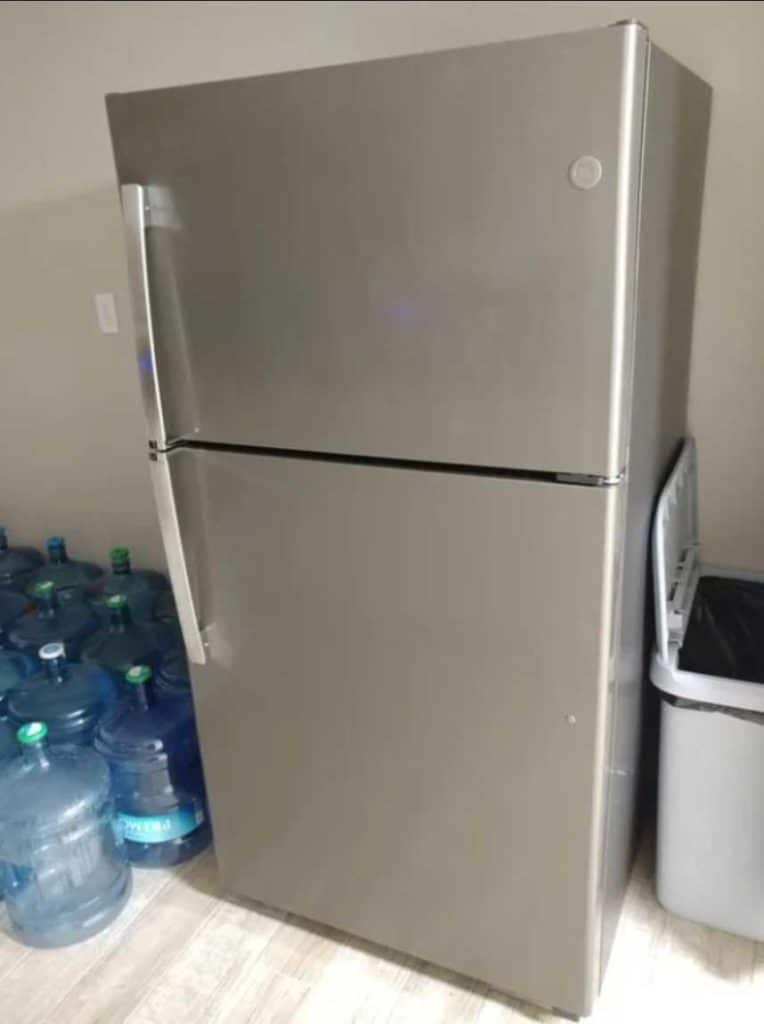
This unit gives you 21.9 cubic feet of storage, split between the refrigerator (15.25 cubic feet) and the freezer compartment (6.68 cubic feet).
It doesn’t include an ice maker, which is good for a garage refrigerator. That means you won’t need a separate water line to install it.
It’s rated for temperatures between 38° F and 110° F. Like most garage refrigerators, it will have some challenges in more extreme temperatures.
Although I liked the look of the stainless steel finish, it’s not smudge-resistant, which may not be the best choice for working garages.
Overall, this is an amazing, no-frills garage fridge. It doesn’t have the luxury features you need in your main refrigerator, but it only costs about half as much as the average refrigerator.
Best Upgraded Garage Refrigerator: Whirlpool Gladiator GARF30FDGB
If you’re outfitting your dream garage, I suggest the Gladiator GARF30FDGB Refrigerator.
Now, I know what you’re thinking. Gladiator makes some pretty good garage cabinets and shelves, but what do they know about making a refrigerator?
That’s where Whirlpool comes in. They’re Gladiator’s parent company, and this garage ready fridge is very similar to Whirlpool’s WRR56X18FW standard refrigerator model.
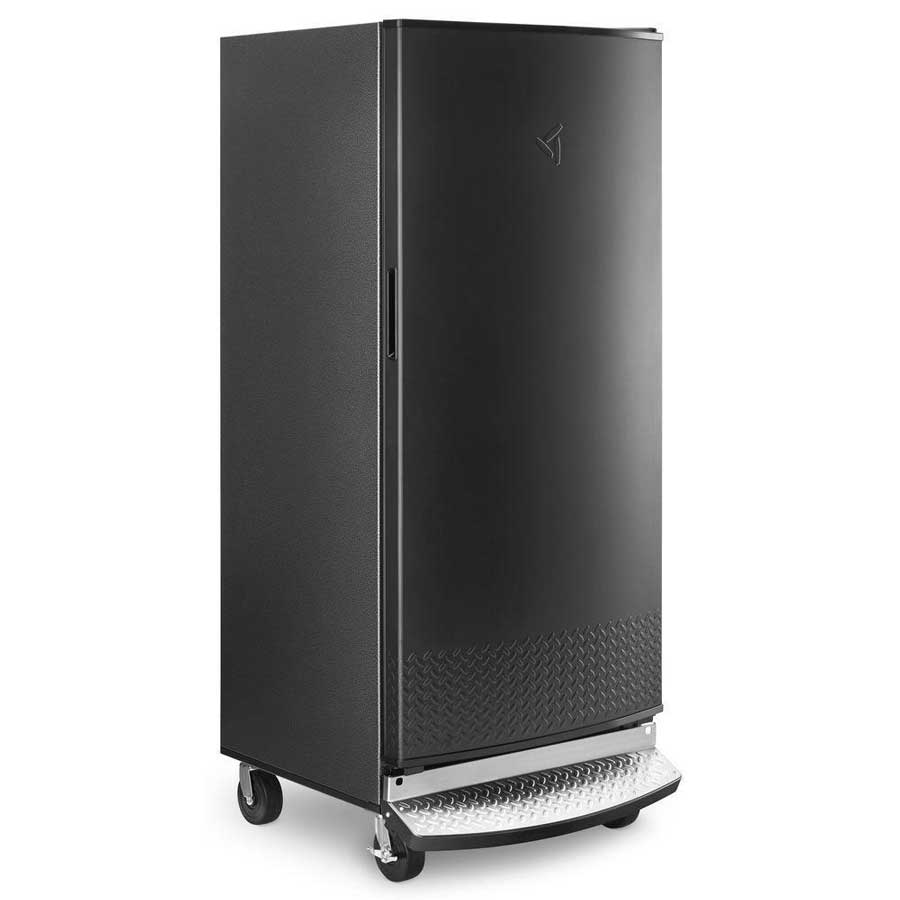
I’m not going to bury the lead here. The Gladiator refrigerator is not cheap. It retails for around $1500, making it one of the most expensive refrigerators for its size.
For that price, you get a 17.8 cubic foot garage ready refrigerator with no freezer section.
Gladiator makes a matching full-size freezer model as well. However I think there are better options for garage freezers (see below).
Because it lacks a freezer section, it has as much refrigerator space as a 22 cubic-foot top-freezer refrigerator while only taking up the space of a 17 cubic-foot fridge.
This fridge comes in a hammered granite finish that will match perfectly with any Gladiator workbenches, cabinets, or shelves you have in your garage.
One of the coolest features is how you open it.
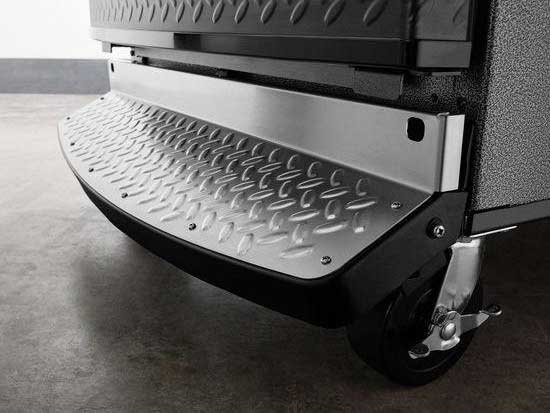
The Gladiator refrigerator door opens via a unique stainless steel foot pedal on the front of the unit. So if your hands are full with a party platter or packs of beer, you won’t need to perform a balancing act to open the door.
If you want to save space, you can open the refrigerator door without the kick panel, but then you lose some of what makes this a really special fridge.
Like most of the other garage refrigerators we’ve seen, it’s rated for temperatures between 38° F and 110° F.
The Gladiator refrigerator is expensive, no doubt about it. No doubt, part of that is because it’s made in the USA (Ohio) and designed to take the abuse of being in your garage.
In the end, that’s why I think it’s one of the best garage refrigerators. Every other garage-ready fridge on this list is capable of garage use.
This is the only one that’s designed for your garage.
Best Garage Chest Freezer: Frigidaire FFCL1542AW
This was a close contest between the popular GE FCM11PHWW, but I have to give the win to the Frigidaire FFCL1542AW chest freezer.
Both are excellent freezers at a similar price point: around $550. Both have an external temperature control, interior light, and sliding interior storage bins for smaller items. You can’t really go wrong with either.
However, there are a couple of features that make the Frigidaire a better freezer for your garage.

The Frigidaire boasts almost 50% more storage space than the GE (14.8 cubic feet vs. 10.6 cubic feet). In fact, the Frigidaire can store over 500 lbs of meat, assuming 35 lbs per cubic foot.
It also has rolling casters for easy movement.
The casters are optional, so you don’t have to install them if you don’t want to. But this was a nice touch and would go well with some of my other rolling garage cabinets.
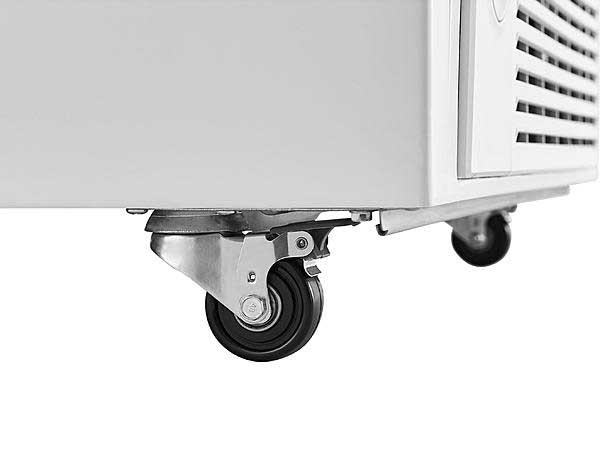
If you have a large family or buy a lot of frozen food, then a chest freezer is the way to go. However, you need to buy a freezer suitable for the garage.
Both the GE FCM11PHWW and Frigidaire FFFC15M4TW are great products, but you get much more for your money with the Frigidaire.
Best Mini Fridge: NewAir AB-1200B
This is another close contest between the NewAir AB-1200B and the HomeLabs HME030065N.
Both are similarly sized mini-fridges for around the same price ($300). Even though the HomeLabs is more popular, I think the NewAir is better.
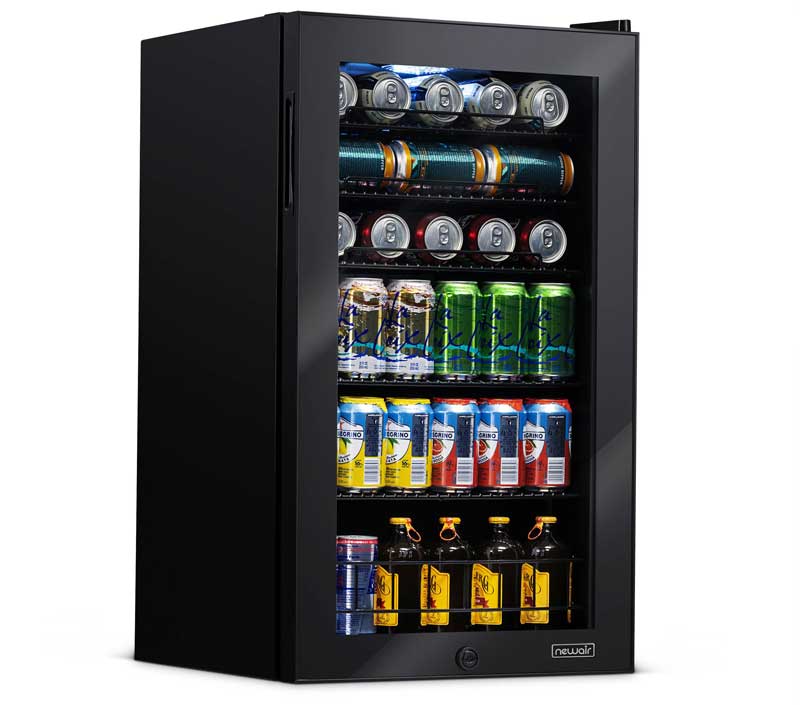
The NewAir AB-1200B has a slightly higher capacity, holding 126 full-size cans versus HomeLab’s 120 cans. It also has a built-in lock to keep kids (or your friends) away from your craft beers, which the HomeLabs does not.
It cools to between 37° F and 64° F and has seven different pre-set modes depending on what types of drinks you’re putting in it.
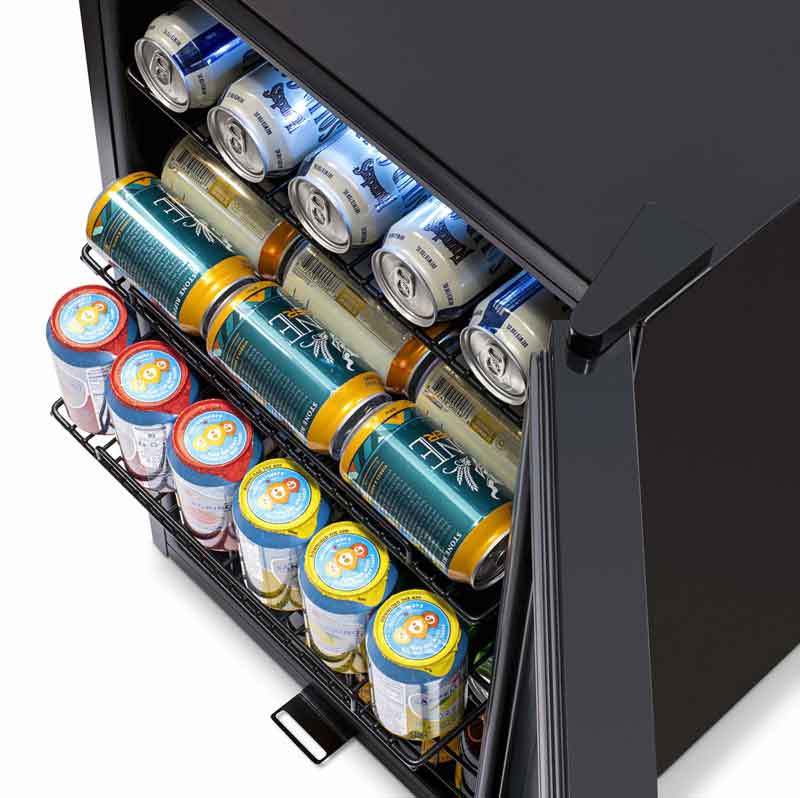
As a company, NewAir has been around for over 15 years and has a great customer service record. It’s safe to say that NewAir will be around for a while.
Sure, you can find cheaper mini-fridges in the $150-$200 range. However, you won’t get as much storage space for that price, and the build quality won’t be as good.
For me, the NewAir 1200B is the obvious choice for a mini-fridge\beverage cooler in the ‘under $300’ price range.
Best Mini Fridge (when you forgot to buy the beer): NewAir NBF125BK00
If you’ve ever thrown a party and forgot to get the drinks or had to make a mid-party beer run, then the NewAir NBF125BK00 was made for you.
Building on the success of the AB-1200B, the NBF125BK00 adds two modes: Turbo mode and Party mode.
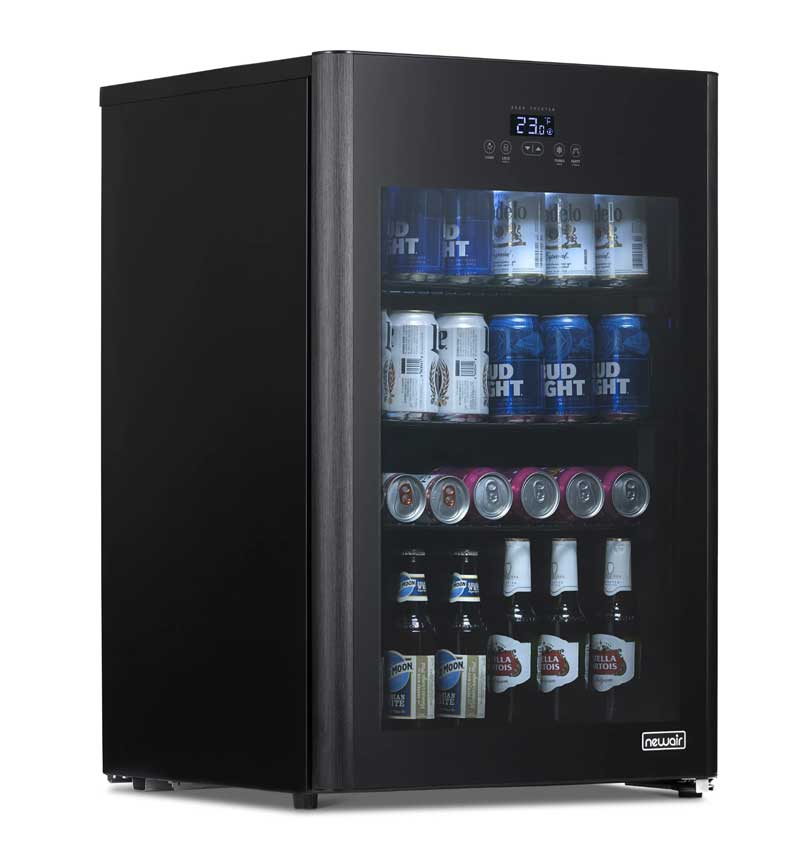
Turbo mode drops the temperature to 23° F, well below freezing, to chill your drinks as fast as possible. Party mode keeps the compressor running for six hours, so your drinks stay cold, no matter how many times the door is opened and closed.
Speaking of the door, the double-pane glass door is heated on the outside, so the door never frosts over.

Looking at other higher-end beer fridges, most other manufacturers only cool to between 34° F and 37° F. It’s rare to find one that will go below the freezing point until you get to a much higher price-point.
The NewAir NBF125BK00 isn’t cheap by any means. It costs about as much as the full-size GE garage refrigerator I recommended above. But for that price, you get a really nice beer fridge with amazing high-end features.

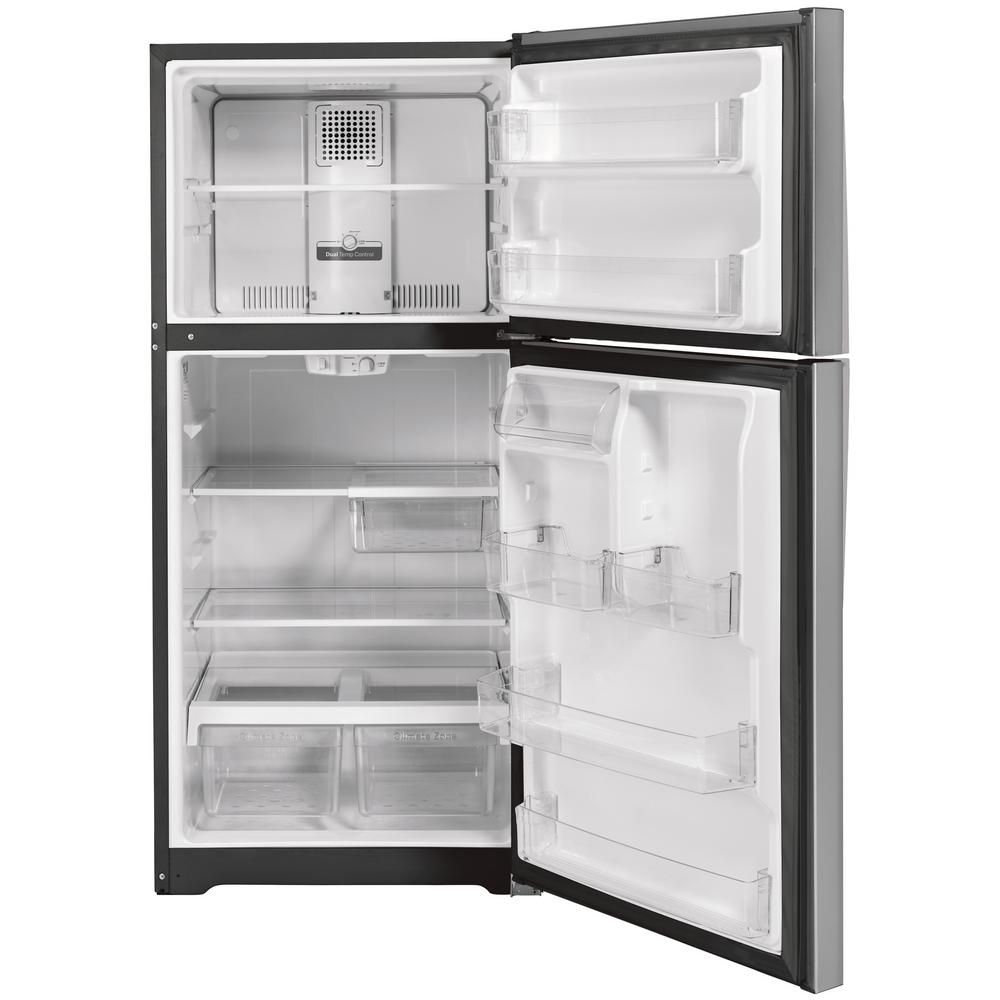
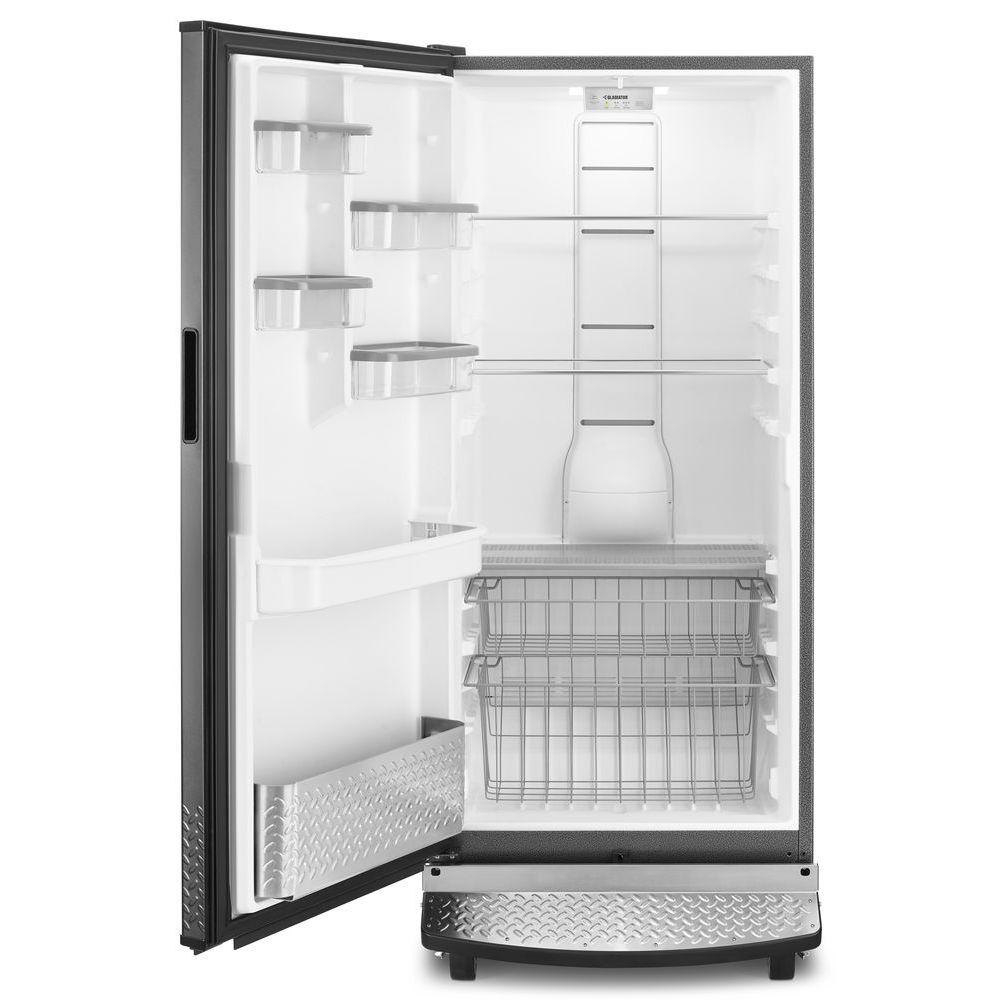
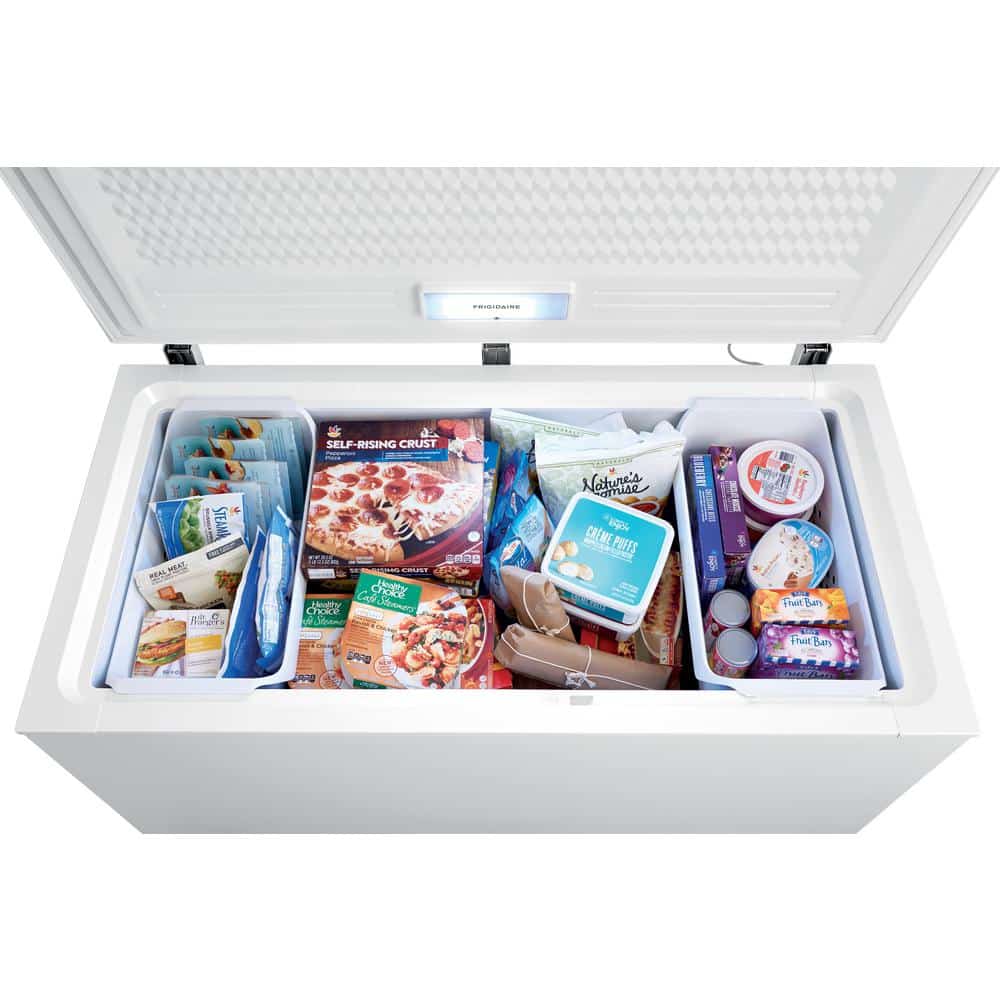
![NewAir 126 Can Refrigerator Cooler [AB-1200]](https://m.media-amazon.com/images/I/418L-SzzbNL._SL500_.jpg)
